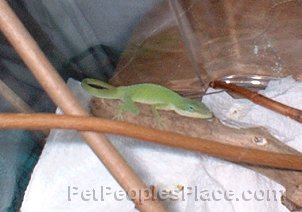Choosing and Buying a Substrate for Reptiles

Once the animal is established, there are a number of substrates available, depending on the species. Young animals are often best kept on paper towels until they are older. This eliminates the possibility that they might ingest some substrate and suffer an intestinal blockage. As they get older they can be switched to a different substrate.

Desert species do well on sterile play sand, as long as all their food is served in a bowl to keep them from accidentally eating some. There are some sands made specifically for reptiles. The finer grain sands, like Zoo Med’s Repti-sand, are good but expensive. Calci-sand has actually been known to cause impaction, and most reptile vets have had experience with reptiles brought in for just this reason. Most will recommend not using this brand, even though it says it is digestible.
Don’t always trust what the company advertises. For tropical species, moisture absorbing substrates work great. Peat moss, sphagnum moss, cypress mulch, and Bed-a-Beast will hold moisture and keep the cage humid. Some substrates work well for desert or tropical species. Bed-a-beast can be used damp or dry, and is a great substrate. It can be spot cleaned, and changes completely when needed.
Care fresh, a bedding made from wood pulp, is also good but may fall apart if it gets too wet. Aspen bedding also works well, but avoid any bedding containing cedar. Cedar contains substances that are toxic to reptiles. Some substrates to avoid include Calci-sand, walnut shells, corn cob, because of the danger of impaction, and cedar.



